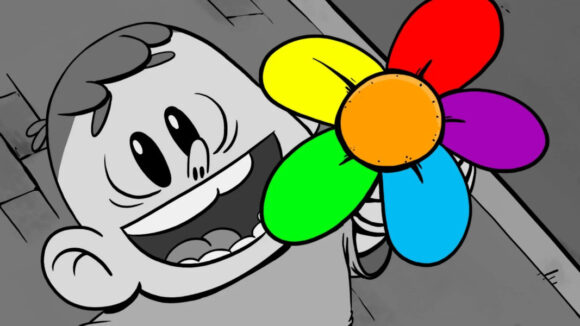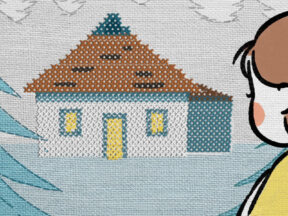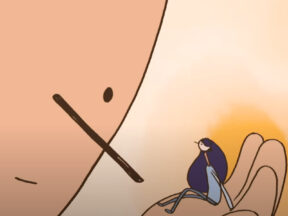

2024 Oscars Short Film Contenders: ‘It’s A Gray, Gray World!’ Director Seyed Mohsen Pourmohseni Shakib
Welcome to Cartoon Brew’s series of spotlights focusing on the animated shorts that have qualified for the 2024 Oscars. There are several ways a film can earn eligibility. With these profiles, we’ll be focusing on films that have done so by winning an Oscar-qualifying award at an Oscar-qualifying festival.
Today’s film is It’s a Gray, Gray World from Iranian filmmaker Seyed Mohsen Pourmohseni Shakib. The short earned its Oscars qualification by winning the best animated short award at the Cleveland International Film Festival.
Set in a world where colors are banned, the short turns on a young man whose vibrant identity is accidentally outed by a playful young child. Those nearby fly into a panic and call in the police to arrest the young man, but he manages to escape and returns ready to fight for his freedom.
Cartoon Brew: What inspires you to make films that focus on marginalized communities?
Seyed Mohsen Pourmohseni Shakib:The main inspiration behind it comes from my personal experiences. I am living in Iran, which has a patriarchal society that doesn’t stand anything that can be a threat to its toxic masculinity status quo. As I remember, I never could fulfill the heteronormative norms of the Iranian culture, so I got punished for it to the maximum for most of my life.
For instance, I was the main target of bullying and teasing by my peers during high school because I had a thin voice, which was counted as a girlish feature for them. So, I have always been an outcast, and nobody wanted me to be on his team, which taught me how to be strong by myself. These painful memories led me to put all my efforts as an artist into helping marginalized communities raise their voices and make the world a better place.
What was it about this story or concept that connected with you and compelled you to direct the film?
I remember the day I was talking about the story for the first time with my colleague, and my eyes were full of tears. So, I saw the story as a catharsis point for me. It was a gate that connected me to my repressed feelings after a long period of resisting depression and helped me to face the anger that was burning me inside, which resulted in inner peace and calmness.
Furthermore, to me, it was an emotional journey from reality to an imaginative world where I could have all the things I wanted to have in my real life so badly but haven’t, things like daring to express myself as I am or being a hopeful person who is staring at a horizon with a bright future, not only for himself but also for his society.
What did you learn through the experience of making this film, either production-wise, filmmaking-wise, creatively, or about the subject matter?
As a filmmaker, I have learned honesty is the most important factor in gaining the audience’s trust and convincing them to try the emotional rollercoaster I have made for them throughout my story. Moreover, by making this film, I have understood the unlimited power of fantasy animation as a weapon for achieving freedom that no dictatorship can take from me as long as I am breathing and thinking.
In the production procedure of this film, I figured out that my team and I were stuck in a kind of long-term relationship that reminds me of troubled married pairs with a child to raise. We have got mad at each other and have laughed together many times, but above all this, we have never forgotten that we have had a huge responsibility, and it is nothing but nurturing a healthy and secure child.
Can you describe how you developed your visual approach to the film? Why did you settle on this style/technique?
Visually, I wanted it to reflect the sociopolitical and psychological layers of living under a totalitarian regime. For this purpose, Pezhman Malehmir, who designed and animated the film, listed all the emotional features that we meant to feel through the environment or characters, and then he tried to find an appropriate style to bring them to life.
For example, he used the architecture of Tehran’s middle-class areas as the main reference for the backgrounds because their compression structure could present a good image of the strangulation feeling of living in such a dictatorship. Furthermore, it was important to me that the film be easy to watch to balance and subtilize the bitterness of the story in a good way. So, Pezhman has simplified all the visual complexities to create a more kid-friendly style for it. This helped the film reach a vast range of audiences.

.png)


